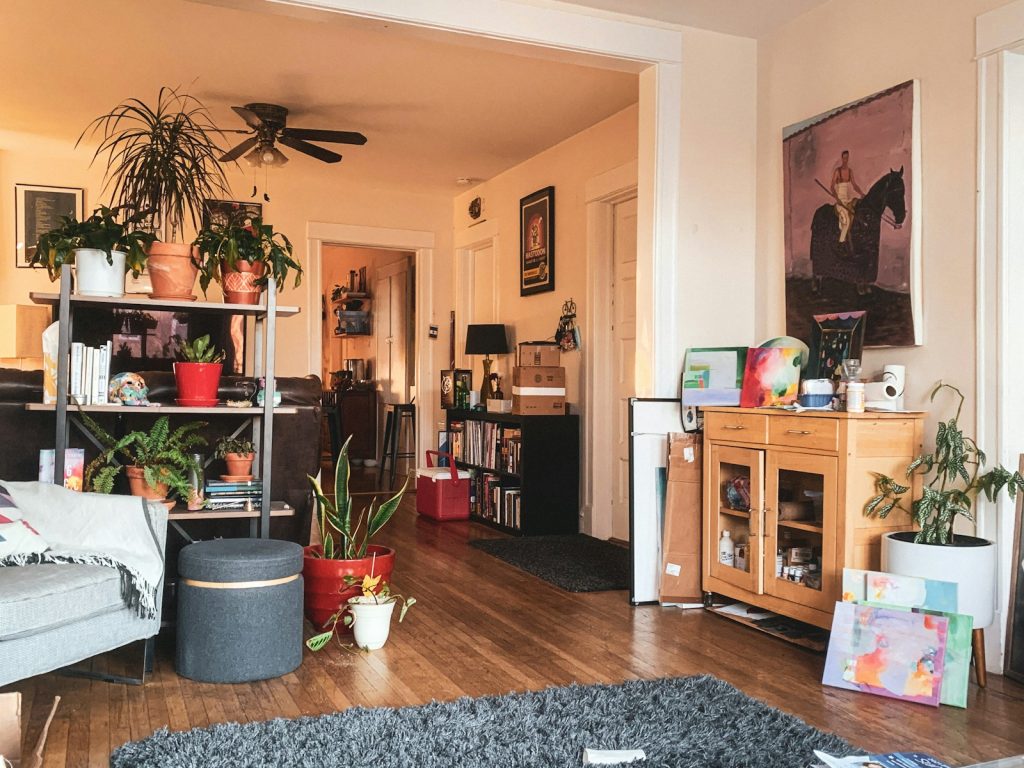Cost of Living Overview
Understanding the cost of living is essential for young professionals trying to figure out their budget and lifestyle in a new city. Various factors contribute to the overall cost of living, and it's important to consider these when comparing different cities.
Understanding Cost Factors
Several key factors influence the cost of living in any city. These include housing, food, transportation, healthcare, and entertainment. Each of these elements can vary significantly from one location to another, affecting your overall expenses.
Housing
Housing is often the largest expense for individuals and families. The cost of rent or mortgage payments can vary widely depending on the city and neighborhood. For instance, the average rent in US cities might be substantially higher or lower than in another city. Here's a table comparing average rents in major US cities:
| City | Average Rent (1-Bedroom) |
|---|---|
| New York | $3,500 |
| Los Angeles | $2,400 |
| Chicago | $1,800 |
| Houston | $1,200 |
| Phoenix | $1,400 |
Food
Grocery prices and dining out costs are also significant components of the cost of living. The price of food can vary based on local economic conditions, availability of goods, and regional preferences.
Transportation
Transportation costs include the price of gas, public transit fares, and vehicle maintenance. In some cities, owning a car may be necessary, while in others, public transportation might be more efficient and cost-effective.
Healthcare
Healthcare expenses can include insurance premiums, co-pays, and out-of-pocket costs for medication and treatments. These costs can vary depending on the availability of healthcare facilities and local policies.
Entertainment and Miscellaneous
Entertainment, dining out, and other miscellaneous expenses also contribute to the cost of living. Cities with a higher cost of living often have more expensive entertainment options.
Understanding these cost factors can help young professionals make informed decisions when choosing a city to live in. For more detailed comparisons, check out our articles on comparing cost of living in different cities and the cost of living comparison by state. Additionally, for those looking for more affordable options, our guide to the best cities for low cost of living might be helpful.

Rental Rates Comparison
Average Rent in Major Cities
Understanding the average rent in major cities across the United States can help young professionals make informed decisions about where to live. The following table provides a comparison of the average rent for a one-bedroom apartment in some of the nation's largest cities.
| City | Average Rent (1-Bedroom) |
|---|---|
| New York, NY | $3,500 |
| San Francisco, CA | $3,400 |
| Los Angeles, CA | $2,300 |
| Chicago, IL | $1,800 |
| Houston, TX | $1,200 |
| Miami, FL | $2,000 |
| Dallas, TX | $1,300 |
| Washington, D.C. | $2,400 |
| Boston, MA | $2,700 |
| Seattle, WA | $2,200 |
For a deeper dive into the cost of living in specific cities, visit our detailed city guides.
Cost of Living Comparison
Comparing the cost of living in different cities can be crucial for those planning to move. Factors such as housing affordability, utility costs, and other living expenses should be considered as part of the overall financial planning.
For more insights into how these cities stack up in terms of living expenses, check out our article on comparing cost of living in different cities.
Affordable and Expensive Cities
While cities like New York and San Francisco are known for their high rental costs, there are several affordable cities to live in that offer a lower cost of living without compromising on quality of life. Conversely, some cities have a highest cost of living, which might be a consideration for those on a budget.
Whether you're looking for the best cities for low cost of living or evaluating the expensive cities to live in, it's essential to balance rental costs with other living expenses to create a realistic budget.
Comparing Cities
To further assist in your decision-making process, our site offers a variety of articles comparing the cost of living in different cities. This can provide a holistic view of what to expect in terms of living expenses in your city of interest.
By exploring these resources, young professionals can better navigate the rental market and find a city that aligns with their financial goals and lifestyle preferences.
Housing Affordability
Home Prices Analysis
Understanding home prices is crucial for young professionals looking to gauge housing affordability in major cities across the US. This section provides a comprehensive analysis of home prices in various urban areas.
| City | Average Home Price ($) |
|---|---|
| New York | 680,000 |
| Los Angeles | 750,000 |
| Chicago | 320,000 |
| Houston | 310,000 |
| Phoenix | 350,000 |
| Philadelphia | 275,000 |
| San Antonio | 260,000 |
| San Diego | 750,000 |
| Dallas | 340,000 |
| San Jose | 1,100,000 |
The table above highlights the average home prices in some of the most prominent cities in the US. For instance, cities like San Jose and Los Angeles have significantly higher average home prices, making them less affordable for many young professionals. Conversely, cities like Philadelphia and San Antonio offer more affordable housing options.
For those considering moving to a different city, it's essential to compare cost of living in different cities to understand the full financial implications. Factors such as living expenses in the city and cost of living comparison by state are also critical in making informed decisions.
For additional information on affordable living options, check out our articles on affordable cities to live in and best cities for low cost of living. If you're interested in the most expensive areas, you can explore our insights on expensive cities to live in and highest cost of living cities.
By analyzing home prices and understanding the broader cost implications, young professionals can make better-informed decisions about where to live and how to budget effectively.

Apartment Costs
Apartment Rental Trends
Understanding apartment rental trends is crucial for young professionals comparing the cost of living in various major US cities. Rental prices can vary significantly based on location, demand, and the type of apartment. Here, we break down the latest trends in apartment rentals to provide a clearer picture of what to expect.
Urban vs. Suburban Rental Prices
Urban areas typically have higher rental prices compared to suburban regions. The demand for housing in cities, proximity to amenities, and employment opportunities drive these costs. On the other hand, suburban areas offer more affordable options, albeit with longer commutes.
Average Rent in Major US Cities
The table below highlights the average rent for one-bedroom and two-bedroom apartments in some of the major cities in the US. This data helps in comparing the cost of living across different urban centers.
| City | 1-Bedroom (USD) | 2-Bedroom (USD) |
|---|---|---|
| New York, NY | 3,000 | 5,000 |
| Los Angeles, CA | 2,300 | 3,200 |
| Chicago, IL | 1,800 | 2,500 |
| Houston, TX | 1,200 | 1,800 |
| Miami, FL | 2,100 | 2,900 |
For a detailed breakdown of the cost of living in specific cities, visit our guide on cost of living in other cities.
Factors Influencing Rental Prices
- Location: Proximity to downtown areas, public transportation, and key amenities can significantly impact rental prices.
- Amenities: Apartments with modern amenities like gyms, pools, and security features tend to have higher rents.
- Market Demand: High demand for rental properties, especially in cities with booming job markets, pushes prices up.
- Economic Conditions: Economic factors such as inflation and interest rates also play a role in determining rental costs.
Trends Over the Past Decade
Over the past decade, there has been a noticeable increase in apartment rental costs in most major cities. This trend is attributed to factors like urbanization, population growth, and limited housing supply.
For those looking to find more affordable living options, our article on affordable cities to live in provides valuable insights.
Impact of Remote Work
The rise of remote work has also influenced rental trends. Many professionals are opting to live in suburban or even rural areas to take advantage of lower rent prices while working from home.
For further information on how the cost of living varies across different states, check out our cost of living comparison by state.
By staying informed about these rental trends, young professionals can make better decisions when choosing a city to live in, balancing affordability with lifestyle preferences.
Utilities and Other Expenses
Additional Living Costs
When considering the average rent in New York, Los Angeles, Chicago and other cities, it's crucial to factor in additional living costs that can significantly impact the overall cost of living. These expenses include utilities, transportation, groceries, and other miscellaneous costs.
| Expense Category | Average Monthly Cost |
|---|---|
| Utilities (Electricity, Water, Gas) | $150 - $200 |
| Internet and Cable | $60 - $100 |
| Transportation (Public Transit, Gas) | $100 - $150 |
| Groceries | $300 - $400 |
| Miscellaneous (Entertainment, Dining Out) | $200 - $300 |
Utilities
Utilities encompass essential services such as electricity, water, and gas. On average, individuals living in [city] can expect to spend between $150 and $200 per month on utilities. The cost can vary depending on the size of the apartment and the number of occupants.
Internet and Cable
Staying connected is important, and internet and cable services are a part of modern living. The average monthly cost for these services in [city] ranges from $60 to $100. Opting for bundled packages can sometimes offer cost savings.
Transportation
Transportation costs can vary based on one's lifestyle and commuting needs. For those using public transit, monthly passes can range from $50 to $100. If driving is the primary mode of transportation, factoring in gas, parking, and maintenance costs is essential, typically averaging $100 to $150 per month.
Groceries
Grocery expenses in [city] can amount to $300 to $400 per month. Shopping at local markets and utilizing discount stores can help manage and reduce these costs.
Miscellaneous Costs
Miscellaneous expenses include entertainment, dining out, and other personal expenses. On average, young professionals in [city] might spend between $200 and $300 monthly on these activities.
For a more comprehensive understanding of living expenses, consider exploring our articles on cost of living comparison by state and comparing cost of living in different cities. Additionally, affordable cities to live in might offer insights into other cost-effective living options.

Financial Planning Tips
Budgeting Strategies
Effective budgeting is crucial for young professionals navigating the rental market in major cities. Implementing solid budgeting strategies can help manage living expenses, including the average rent in [city]. Here are some practical tips for financial planning:
Assess Your Income and Expenses
Start by calculating your total monthly income and categorizing your expenses. This includes rent, utilities, groceries, transportation, and entertainment. Use a table to organize your budget:
| Expense Category | Monthly Cost ($) |
|---|---|
| Rent | 1,500 |
| Utilities | 150 |
| Groceries | 300 |
| Transportation | 200 |
| Entertainment | 100 |
| Total | 2,250 |
Allocate a Percentage for Rent
A general rule of thumb is to allocate no more than 30% of your monthly income towards rent. This ensures that you have sufficient funds for other necessities. For example, if your monthly income is $4,000, your rent budget should be around $1,200.
| Monthly Income ($) | Maximum Rent Budget ($) |
|---|---|
| 3,000 | 900 |
| 4,000 | 1,200 |
| 5,000 | 1,500 |
Prioritize Savings
Set aside a portion of your income for savings. Aim to save at least 20% of your monthly income. This can be directed towards an emergency fund, retirement savings, or future investments.
| Monthly Income ($) | Savings Target ($) |
|---|---|
| 3,000 | 600 |
| 4,000 | 800 |
| 5,000 | 1,000 |
Track and Adjust Your Spending
Use budgeting apps or spreadsheets to monitor your spending. Adjust your budget as needed to accommodate unexpected expenses or changes in income. Regularly reviewing your budget helps maintain financial discipline.
Limit Discretionary Spending
Identify areas where you can cut back on discretionary spending, such as dining out or entertainment. Allocate these savings towards essential expenses or bolster your savings.
For more tips on managing living expenses in different cities, explore our articles on comparing cost of living in different cities and affordable cities to live in.
By implementing these budgeting strategies, young professionals can better manage their finances and make informed decisions when renting in various cities. Explore our resources on highest cost of living cities and best cities for low cost of living for further guidance.
























Post Comment
You must be logged in to post a comment.